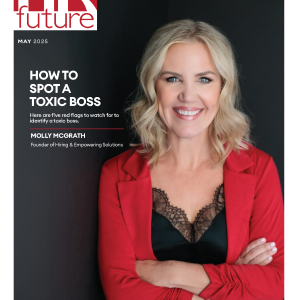If your company is experiencing a period of change or going through a difficult time, you may think this is purely an internal event that is completely contained within your organisation.
But as a business owner or manager, you may be interested to learn that internal upheavals within a company have an explicit effect on how external customers interact with and perceive your brand – especially in a B2B context. Ultimately, unhappy internal teams lead to unhappy customers.
But why is this?
The key person in this scenario is the client-facing employee within your business, whether it’s a salesperson, an account manager or a service staff member. This is because when it comes to your “frontline” staff, there’s often a solid relationship that’s already formed between them and the client, which may span many years (this is often the case in a B2B relationship). So, when internal turmoil presents itself, the employee may end up letting off steam to the client about their personal experience of it.
While it’s less than ideal for your employees to share their frustrations about your company with your clients, it’s important to put yourself in their shoes to understand why they’re doing this.
To the client-facing person, chances are that the internal changes are making them look bad. Maybe the sales process has been made more complicated, or maybe a simple job that would normally be quick and easy to do for the client now takes much longer, or is much more expensive. While many clients are understanding about change within a business, some aren’t. Some clients may take their frustrations out on the sales employee, who is the first line of interaction with the company and its brand. It’s natural that the employee would, in turn, defend themselves by trying to empathise or agree that things are not as they should be.
This illustrates how internal culture is just as important as the outward face that a brand portrays through its marketing efforts. In fact, they can’t be separated. Because even if a brand tries to communicate the type of company they think they are, a client will very quickly pick up what kind of company and processes they are actually dealing with, through the employees they come into contact with. And if this employee is unhappy, this could be detrimental for your company.
So, what’s the solution for avoiding this negative sentiment being passed on from client-facing employee to customer?
The most important thing is to communicate and integrate the reasons for the change throughout the whole company. In a business context, change is inevitable, and sometimes things don’t go as they should. But no matter what the issue is, you should be open in your communication about the issues to your employees, and get their buy in about it. If this is done properly, then they can carry a consistently positive message across to the consumer that’s coherent with the outward brand messaging. If this integration doesn’t happen and is not sold internally, the marketing “story” is likely to fall on its head. Manage your own expectations around your internal team’s capability – and prepare them to deal with some difficult customers.
For example, there may be a perception that a certain company is lacking in leadership, or has inefficiencies, or is very bureaucratic, and internal hierarchical changes are then made to address these inefficiencies. But if the salesperson feels marginalised or threatened by this restructuring, they won’t be inclined to tell their customers that the end result is for their benefit. At worst, they may become belligerent, defensive or even obstructive. If a customer then interacts with this employee, they’ll immediately assume that the worst is going on behind the scenes. Therefore, the attitude of a frontline staff member is key in affecting a positive brand association with customers.
As a business owner or manager, it’s very important to understand how certain changes within your company may be affecting your employees, and then to act with compassion and understanding. Empowering your employees, especially your client-facing ones, can have a huge impact on how your customers then interact with your business as a whole.
Claire Denham-Dyson is the head anthropologist at Demographica.













